As an Amazon Associate I earn from qualifying purchases.
Beer battered halibut fish and chips are a necessary part of human existence, and I am here to help you perfect this classic.
At some point, all of us have sat face-to-face with a pile of English fish and chips or fried clams. As this usually happens first when we are tiny tots, the experience can alter the course of our dietary existence: After that virginal fish fry, many of us we emerge either as committed fish lovers — or, like many Americans, committed fish haters.
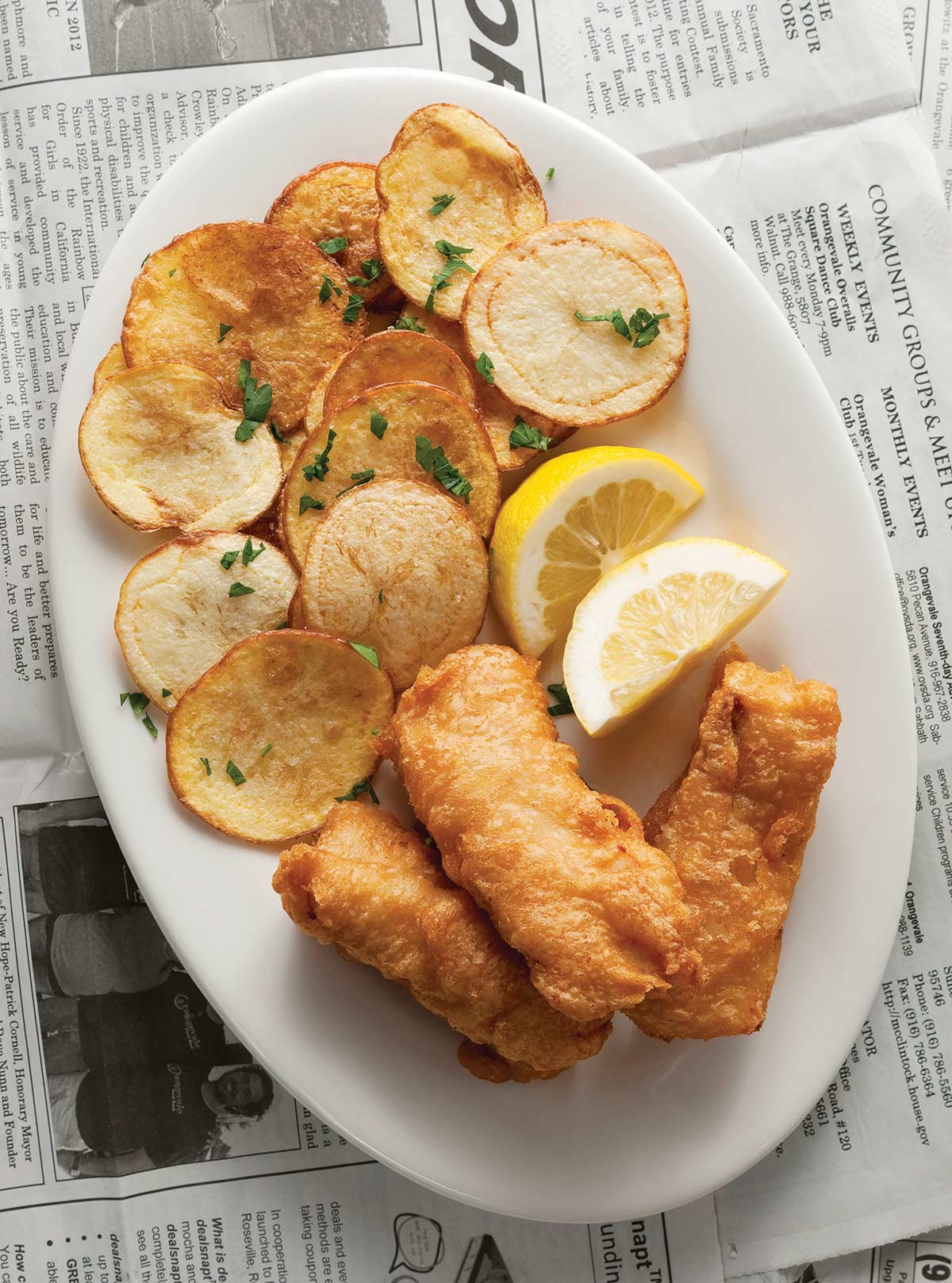
Only about half of Americans eat seafood more than once or twice a year, and I suspect that a big reason for such a gulf between fish eaters and fish haters is what was on that first plate of beer battered fish and chips. Try to think back to your childhood now: Did your mom cook her own fried fish, or did she open a box and shake out a few frozen fish sticks?
I have vivid memories of both cases. My mom cooked her own fish. I have a crystalline image in my head of mom busily making fried flounder. It must have been the mid-1970s. She’s standing next to a pile of flounder fillets, each layer separated by paper towels sodden with oil. We’d eat these with lemon and lots of “tah-ta sauce.” Mom is from Massachusetts.
I also remember eating at some of my friends’ houses. That image is of pre-breaded fish sticks clunking out onto a foil-lined tray that somebody else’s mother popped into the oven, often a toaster oven. I remember these being dreadful.
But neither of these are halibut fish and chips, or really any beer battered fish. These, for most of us, are only eaten at restaurants. Here’s how to make them at home. Correctly.
English fish and chips may be that nation’s culinary gift to the rest of the world, although the English are experts at roasting large pieces of meat, too. Let’s start with the fish.
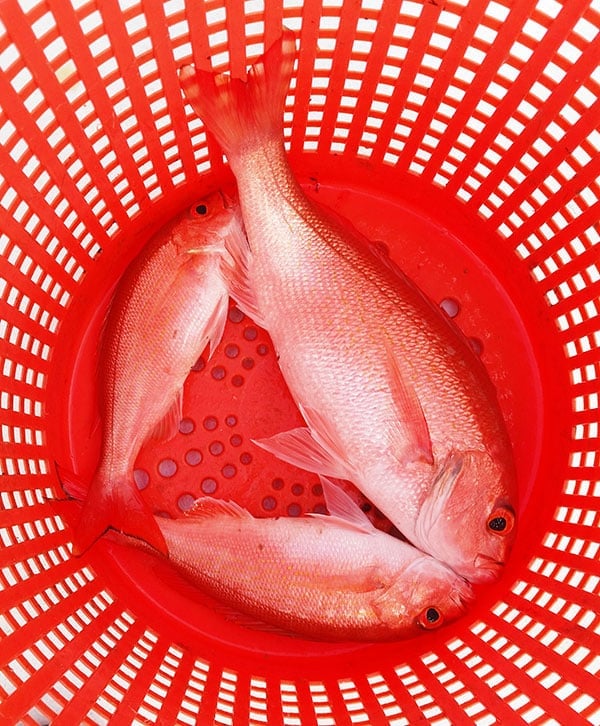
Best Fish for Fish and Chips
I’ve eaten beer battered fish and chips six ways to Sunday, but all the best share a few characteristics: They’re all firm, white, and lean — and of course skinless and boneless. My go-to here at home is halibut fish and chips.
Cod, haddock and pollock are classics in the East, as is halibut, rockfish or lingcod in the West. In Wisconsin and Minnesota, walleye and yellow perch are king. In the South, it’s all catfish until you get to the Gulf, where snapper and redfish take over. Hell, I’ve even used tilapia.
Dogfish and leopard shark are the perfect frying fish, and in fact are traditional with northern English fish and chips. The meat is white as snow, very lean, and firmer even than halibut. And, happily none of these fish are threatened, so you can eat them with a clean conscience.
Bottom line: You want a reasonably thick, firm fish for the best beer battered fish and chips. Avoid soft textured fish like mackerel or bluefish, or really thin fish like flounder; they are best cooked a little differently.
Seafood? You bet. Beer battered shrimp and lobster is amazing. Obviously you can batter clams, as many do, and I suppose you could batter squid, too, although it’s usually just floured and fried.
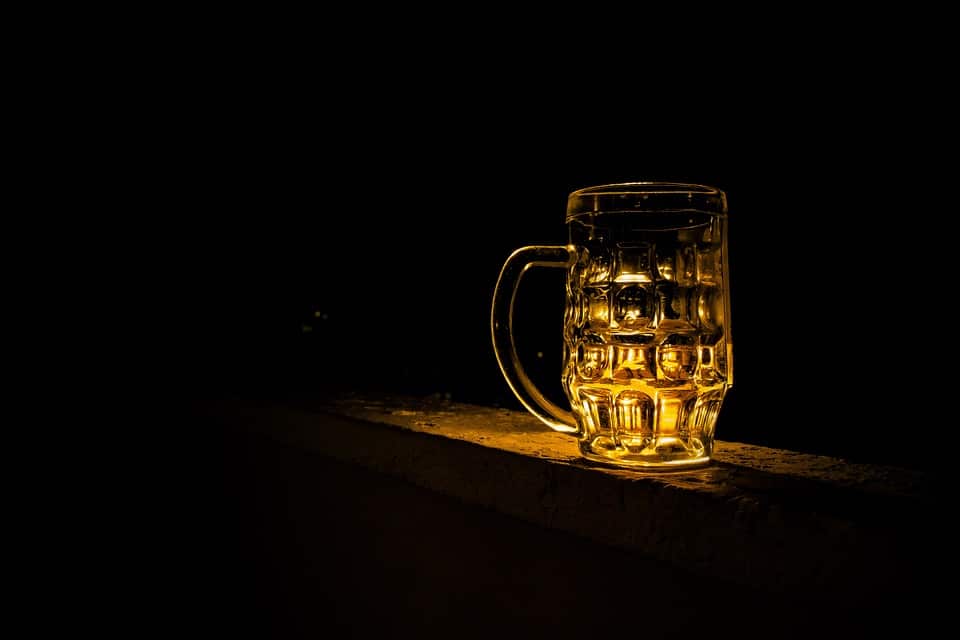
Best Beer for Fish and Chips
Take a tip from the origin of the dish. Halibut fish and chips is best with English beer. A mild, malty beer is my absolute favorite. It is distinctive enough to get you noticed among beer battered fish aficionados, and won’t ruin your batter like an IPA. Never use IPAs for beer battered fish and chips. The bitterness will wreck the dish.
Other than that, the sky’s the limit, although my next favorites after the English ales are German (really American and Mexican) lagers. Avoid a really good pilsner since it too will be hoppy in its own way. Cheap American macro beers are great for beer batter.
And while they have their adherents, “weird” beers like sours or heavy Belgian beers or oddly flavored beers might end up as your favorite, but it won’t please a crowd.
Oh, and what’s with the beer anyway? Beer’s carbonation makes a lighter batter. This is another reason why you want to avoid sours or IPAs, which are not normally heavily carbonated. Lagers are typically the most carbonated beers you will normally buy.
The Flour
You can absolutely go minimalist and use plain flour for halibut fish and chips. Many do. But you will get a better batter if you use self-rising flour, or just add a bit of baking powder to your regular flour.
Want to play? Play with the flour. Different flours will give you different results. Most, however, will be heavier than all-purpose flour. I rarely deviate from the ole’ AP flour.
You can add whatever seasonings you want to the flour, but I generally keep things very simple because any spices or whatever you add will be exposed to the raging hot oil and can burn and become bitter. Paprika is especially prone to this.
I don’t cook gluten-free on purpose, but here is a pretty legit gluten-free beer batter for fish if you can’t do flour. Not as good as the real thing, but hey, better than nothing!
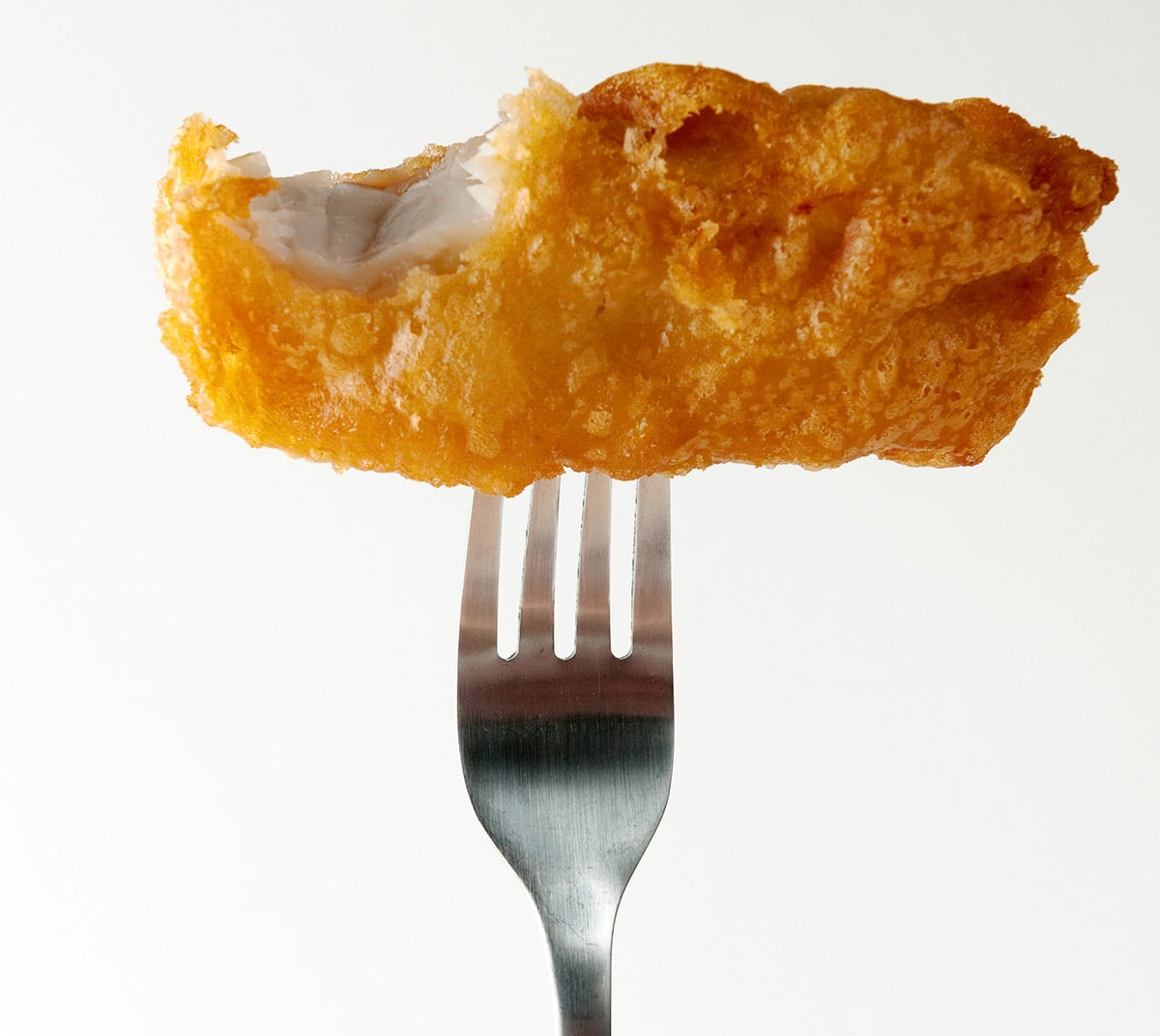
Achieving The Crisp
We eat halibut fish and chips because we want that juxtaposition of perfectly cooked, essentially steamed fish, inside a crispy, crispy exterior.
You get that with hot oil. I know this seems obvious, but I need to stress this. People get scared of hot oil, and if you are, beer battered fish and chips are not for you. You need the oil at at least 350°F and really 360°F. Good oils like refined peanut oil, canola, corn oil, grapeseed and avocado can all handle this easily.
Hell, regular vegetable oil will, too, although you will then want to watch that the oil doesn’t climb above 400°F at any moment. Not a problem in most cases.
Yeah, it can be sporty to have a half-gallon of 360°F oil roiling on your stovetop, but so long as you know it’s that hot, you’re fine. Bad things happen when you don’t, and the oil gets too hot. Thermometers are a must.
I like deep fryers because they restrict the amount of vaporized grease that gets into the air. And while that aroma really adds to the ambiance of a place like Pike Street Fish Fry, its not so good in your house. But a heavy Dutch oven will work fine, too. Just keep the oven fan on high.
Oil temperature isn’t the only factor in ultra crispy halibut fish and chips. How you hold the finished pieces matters a lot, too. Remember me talking about Mom frying fish and stacking them like cordwood? Don’t do that.
(Like this recipe? I have lots of variations on fried fish here, from Chinese salt and pepper fish, to Mexican fried fish, to a simple fried snapper with Saltines.)
Instead, place a cooling rack on a baking sheet in the oven and set it to “warm,” or about 185°F. Set the finished pieces on the rack and they will stay crispy.
Overloaded fryers also cause soggy fish and chips. Place each battered piece in the hot oil separately, and make sure you wait a second — or have enough room — for the batter to set or so that the pieces never touch in the first 30 seconds or so. After that, they can bounce around if they want.
I know, so many words about halibut fish and chips. But even though this is a simple recipe, it is technique driven, and there is a reason that the best fish and chips places are revered.
Side note: When eaten cold the next day, halibut fish and chips (or those made with little sharks) tastes astonishingly like cold fried chicken. Go figure.
The Chips
A word on the chips: I am not very good at making my own French fries, which require double-frying. Here is a good recipe for the French Fries.
Instead I make my own chips, which I like just as much. Potatoes sliced just thick enough so the center is soft, just thin enough that a quick bath in hot oil will crisp the outsides.
You make these before the fish, actually, because they take longer and hold well in the oven. Pro tip: Use waxy potatoes like Yukon Golds, not russets. The texture is more like a fried potato and less like a store-bought potato chip.
Beer Battered Halibut Fish and Chips
Ingredients
FISH
- 2 pounds fish, skinless and boneless
- Salt
- Oil for frying
- About 1/2 bottle beer
- 1 teaspoon salt
- 1/2 cup self-rising flour
CRISPS
- 2 pounds Yukon gold potatoes, sliced into 1/8-inch thick rounds
- 2 tablespoons vegetable oil
Instructions
- Salt the fish and set it aside at room temperature. Get your oil going: You want it to be 350°f to about 360°F. Turn the oven to the "warm" setting, and put a cookie sheet inside. Place a cooling rack on top of the cookie sheet.
- Mix the flour, salt and beer together, stirring all the while. You want enough beer in the batter to give it the consistency of house paint, or melted ice cream. Put the batter in the fridge to rest for 20 minutes.
- While the batter is resting, slice the potatoes and put them into a large bowl of cold water. When you are done slicing, remove the potatoes and pat them dry with a paper towel.
- The oil should be hot by now. Fry the potatoes, a few at time, for 3 to 5 minutes, or until they start to brown at the edges. Don't cook them until they are uniformly brown or you will overcook them; they will continue to brown a little out of the fryer. Salt each batch the moment it comes out of the fryer. Store each batch on the wire rack in the warm oven.
- When the potatoes are done, take the batter out of the fridge. Dredge the fish in the batter and let the excess drip off for a second or two. Lay each piece gently into the hot oil. Do this by letting the bottom end of the piece of fish fry for a second or so in the oil before you let the whole piece get a bath. This helps prevent the fish from sticking to the bottom of the pot. Keep a chopstick or something similar around to dislodge any pieces that do get stuck.
- Fry in batches until golden brown, about 5 to 8 minutes depending on how large the pieces are. Keep each batch in the warm oven while you finish the rest. Serve at once when you're done.
Video
Notes
Keys to Success
- Keep the fish in manageable pieces, no bigger than your palm.
- Make sure the oil is hot, 350°F or a little hotter, and the batter is cold. This shock makes a lighter batter.
- When in doubt, make the batter thicker.
- Keep seasoning simple. If you want jazz, do that with the sauce.
Nutrition
Nutrition information is automatically calculated, so should only be used as an approximation.
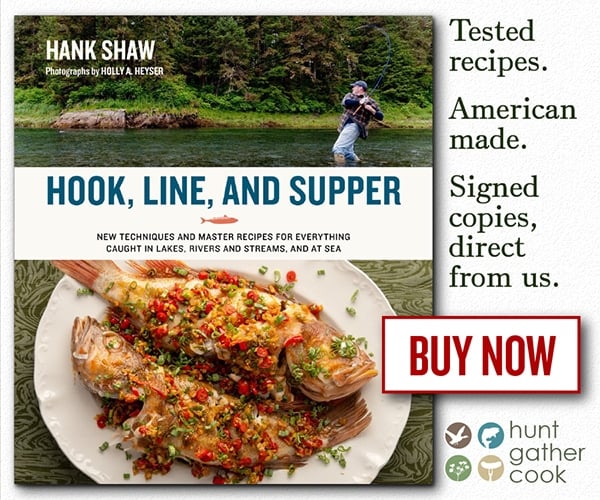

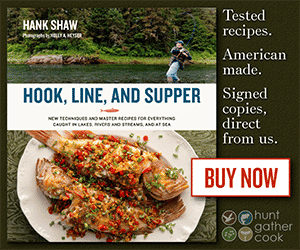
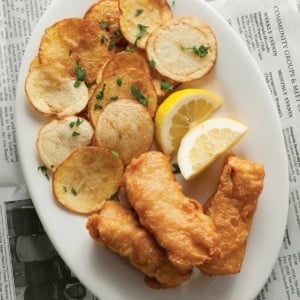
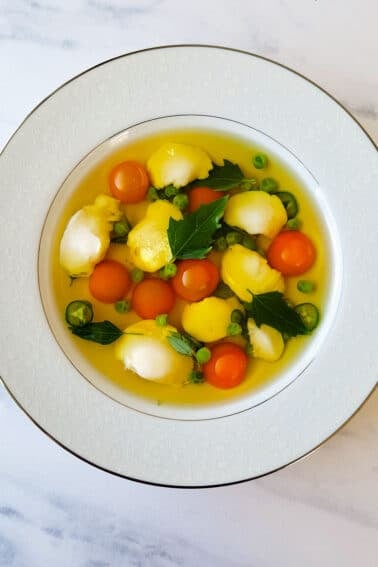
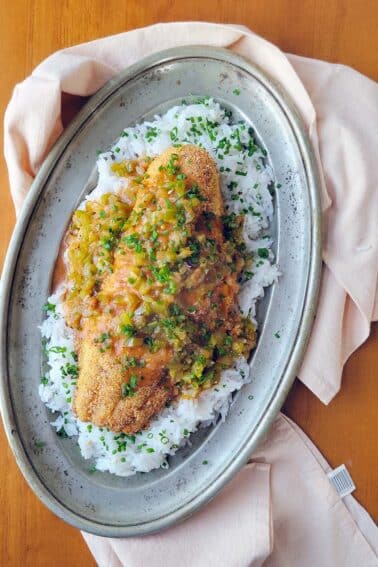
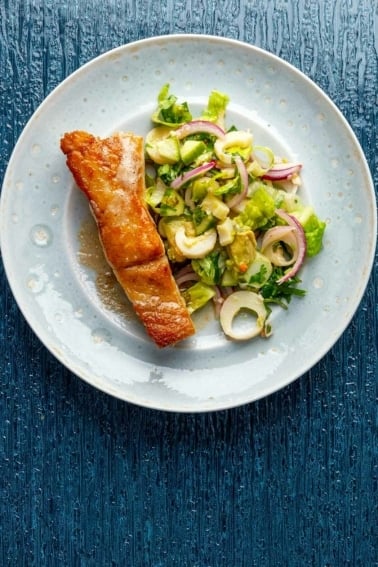

Any particular deep fryer you recommend? I’ve made this with PBR & halibut in my Dutch oven and this is by far, our favorite fried fish recipe! Thank you!
Jill: I just use a pot. I don’t use a dedicated deep fryer anymore.
please just give a couple names of beers to use! I do t drink beer . pale. malty. hoppy. never ipa. whatever. just name 3 brands and make it easy
Pamela: Budweiser, Coors or Miller.
r for all the recipes. We grew up in massachusetts, right near the ocean so we love fried clams. Unfortunately we now live in Ireland and have no access to clams. However my husband puts out lobster traps in the summer and we have lots of lobsters and crabs. I prefer mine just dripping in hot, melted butter.
your link to the gluten free option is a game changer. I’m gluten free out of necessity and only cook gluten free. The gf version is amazing and everyone I have served it to raves about it. Halibut, rock, ling are all fabulous with it.